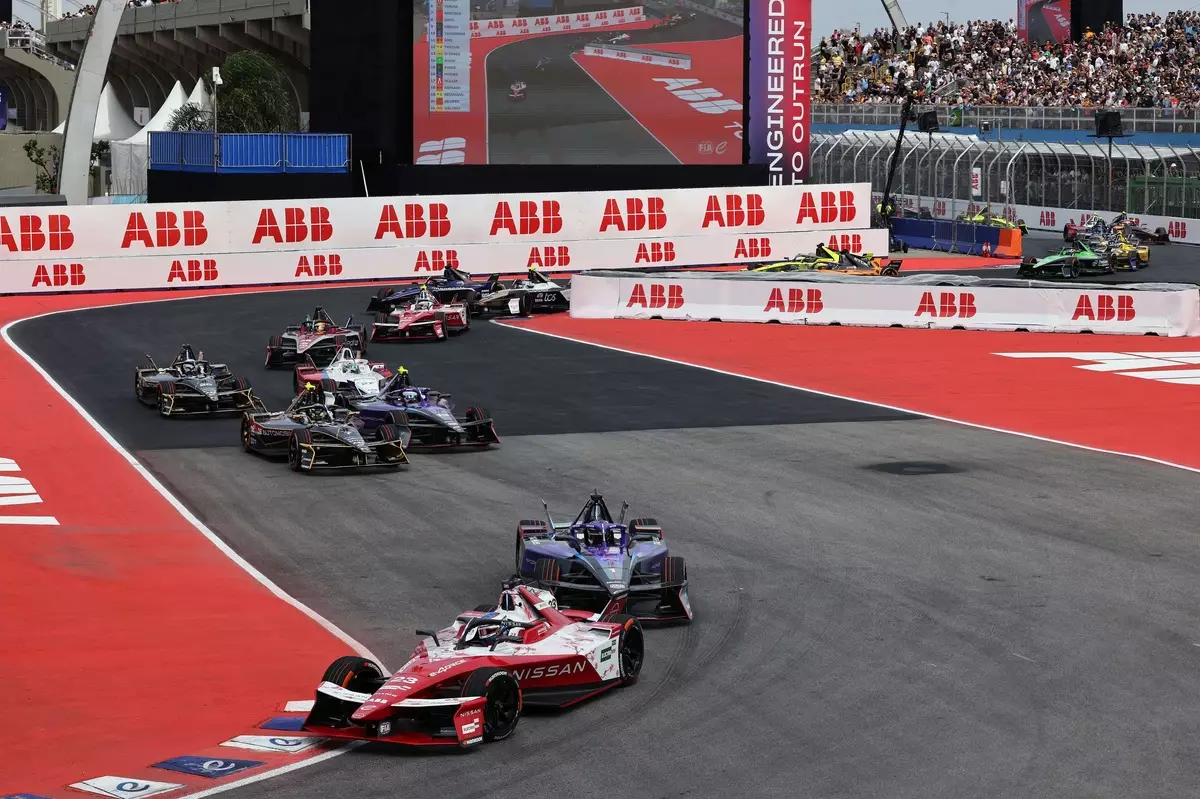Unraveling Missed Opportunities: Oliver Rowland’s Disappointing Sao Paulo E-Prix
As an avid motorsport enthusiast, there’s something truly exhilarating about the start of a new season. The Sao Paulo E-Prix was no exception, especially for fans of Oliver Rowland. Stepping into the 2024-25 Formula E season with Nissan, hopes were high for Rowland. His performance in qualifying was nothing short of impressive, clinching second place by a hair’s breadth. Just 0.099 seconds stood between him and pole position, claimed by Pascal Wehrlein. It felt like the stage was set for a triumphant race day.
However, what unfolded was a rollercoaster of emotions that left us all on the edge of our seats. From the onset, Rowland displayed his prowess with a bold start, overtaking Wehrlein and leading the pack in those crucial early laps. It was thrilling to watch him navigate Sao Paulo’s challenging street circuit with such skill and determination. Yet, as the race progressed, fate seemed to have other plans. Challenges arose that tested not only his speed but his strategic acumen.
The disappointment that followed was palpable. Watching from home, I couldn’t help but feel a wave of empathy as Rowland’s promising start unraveled due to unforeseen blunders and penalties. This race turned out to be a harsh reminder of how quickly fortunes can change in the world of Formula E racing. It’s these unpredictable elements that keep us hooked on every twist and turn.
Key Takeaways
- Oliver Rowland started strong but faced significant setbacks during the race.
- A drive-through penalty severely impacted his potential podium finish.
- Miscommunication and strategic errors were pivotal in the outcome.
The Race Unfolds
The race began with high stakes and even higher speeds. Rowland’s launch off the starting grid was nothing short of spectacular, immediately taking control by surpassing Wehrlein. For those initial laps, he held his ground valiantly, showcasing why he’s considered one of the top talents in the sport. Yet, as any seasoned Formula E fan will tell you, it’s not just about speed; strategy plays an equally critical role.
One of the defining features of Formula E is its unique strategies like Attack Mode, which can dramatically alter race dynamics. Rowland experienced this first-hand when Nick Cassidy managed to capitalize on an opportunity to overtake during this phase. It was a reminder of how delicate the balance is between aggression and caution in these races.

Despite these challenges, Rowland didn’t back down easily. He managed to regain momentum and establish a lead once more, holding it for a substantial portion of the race—17 out of 35 laps to be exact. Watching him do so well was a testament to his skill and determination on such a demanding circuit.
Penalties and Their Impact
The turning point came with an unexpected drive-through penalty due to overpower conditions—a penalty that has become somewhat notorious in Formula E circles. For Rowland, it wasn’t just a personal setback; it highlighted broader issues within team strategy and execution. As fans watched him drop from first to fourteenth place, it became clear how devastating such penalties can be.
The frustration wasn’t limited to Rowland alone; it echoed through his team as well. Reflecting on these strategic missteps post-race brought to light multiple areas where improvements could be made—communication being chief among them. These insights are crucial not only for Rowland but for any driver aiming to succeed in this fiercely competitive environment.
Missteps and Lessons Learned
The chaos during the race also brought attention to another critical aspect: accurate lap counts and energy management—a challenge unique to Formula E’s regulatory structure. Misjudgments here led to energy mismanagement that compounded existing frustrations for Rowland and his team. It’s a stark reminder of how every detail matters in racing where split-second decisions can define success or failure.

Throughout these trials, safety protocols like red flags further complicated matters by altering race dynamics unexpectedly. Each stoppage demands rapid adaptability from drivers—a skill vital in maintaining competitive edge under pressure. Unfortunately for Rowland, initial strategies for energy recovery post-red flag didn’t pan out as hoped once racing resumed.
Final Thoughts
As we look ahead, it’s clear that Oliver Rowland has both opportunities and obstacles awaiting him this season. The Sao Paulo E-Prix may have been disappointing initially but offers invaluable lessons integral for growth moving forward—both personally as a driver and collectively within his team framework.
This journey isn’t just about overcoming setbacks; it’s also about harnessing talent while learning from past mistakes—an ongoing process essential for any athlete striving towards excellence at elite levels like Formula E racing demands today more than ever before!

Oliver Rowland
Sao Paulo E-Prix
Formula E
Racing Strategy


Leave a Reply